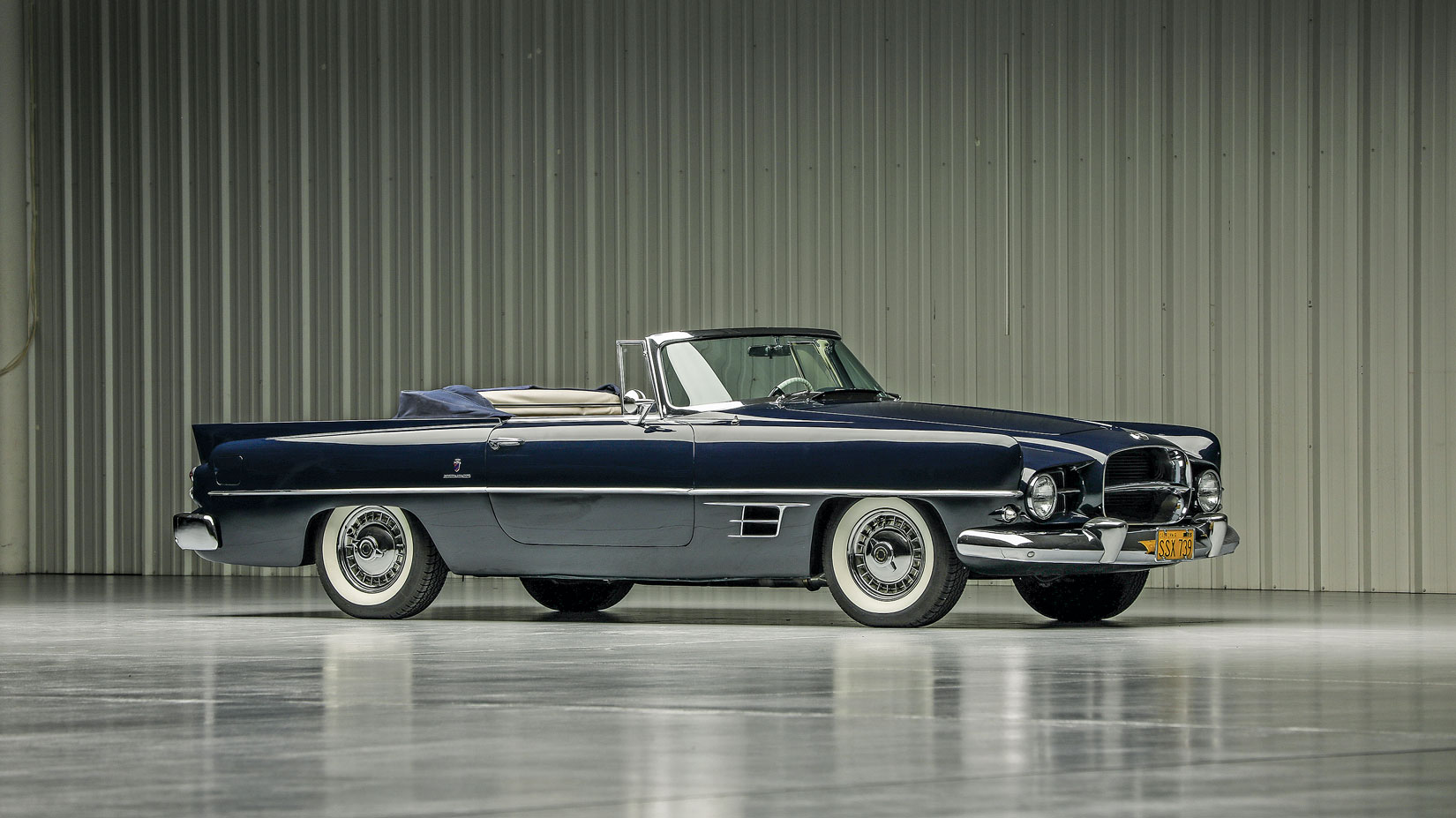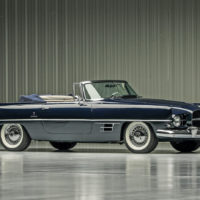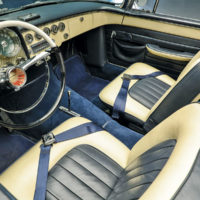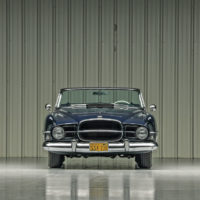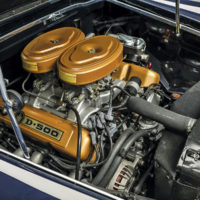SCM Analysis
Detailing
| Vehicle: | 1957 Dual-Ghia Convertible |
| Years Produced: | 1956–58 |
| Number Produced: | 100 |
| SCM Valuation: | $308,000 |
| Tune Up Cost: | $350 |
| Chassis Number Location: | Driver’s side door upper section |
| Engine Number Location: | Block behind water pump |
| Alternatives: | 1956 Packard Caribbean convertible, 1957 Chrysler 300C convertible, 1957 Cadillac Eldorado Biarritz convertible |
| Investment Grade: | B |
This car, Lot 20, sold for $456,000, including buyer’s premium, at Worldwide Auctioneers’ Auburn Auction on September 4, 2021.
The early 1950s were heady times for the American automotive industry. The warmed-over pre-war designs had satisfied the pent-up demand from the lean war years, but they had run their course. The design studios at General Motors, Chrysler and Ford were turned loose to generate excitement for the coming models.
General Motors presented its version of the future with futuristic Motorama buses that took its concept-car show on the road in 1953. Over 1.4 million people were able to see the Cadillac Orleans, Chevrolet Corvette, the Oldsmobile Starfire and others. Ford had its first concept car in the X-100. Chrysler’s Vice President of Design Virgil Exner presented the Chrysler C-200, Plymouth XNR and the Carrozzeria Ghia-built Dodge Firearrows.
A second chance
When Chrysler decided not to produce the Firearrow, Detroit industrialist Eugene Casaroll was able to purchase the rights to the design. He had made his fortune building military vehicles during the war that were powered by engines in the front and the rear, thus the name of his company, Dual-Motors Corporation. With assistance from Ghia designer Paul Farago, they refined the original concept. The trunk was enlarged, as was the passenger compartment. That staple of American design in the later ’50s, fins, were also added.
A Dodge D-500 was sent to Carrozzeria Ghia in Turin, which shortened the wheelbase and hand-formed the body, a process that required 200 man-hours per car. The car was then sent back to the U.S., where a Dodge Red Ram V8 (with either a poly or Hemi head) was installed. This became known as the “world’s longest assembly line.”
The 1956 Dual-Ghia combined the best of both worlds, but at a price. Its MSRP of about $7,500 placed it above the Cadillac Eldorado Biarritz. But even if you had the money, that did not mean you could buy one. As the story goes, a Brooklyn buyer was turned down, as one had already been sold there. The would-be customer offered to move to Connecticut but was informed that one had been sold there as well.
Celebrity influencers, 1950s-style
Potential Dual-Ghia owners were personally selected from a long list of clamoring applicants. Richard Nixon and Ronald Reagan made the cut, as did Sinatra and his Rat Pack pal, Dean Martin. Martin drove his in the film “Kiss Me, Stupid.” Desi Arnaz managed to wreck his. Hoagy Carmichael somehow ended up with four.
While pricey, the Dual-Ghia was even more expensive to build. So inevitably, this losing proposition came to an end in 1958 after 100 convertibles had been produced. (A single prototype hard-top coupe is known to exist.) The preeminent Dual-Ghia authority, Dr. Paul Sable, states that 71 have survived.
The Dual-Ghia offered by Worldwide Auctioneers was finished in Midnight Blue with two-toned blue-and-cream leather seating. It spent 18 months on display at the Petersen Automotive Museum in Los Angeles and was recognized at two California concours.
The bigger claim to fame, however, is its connection to Frank Sinatra. While the auction catalog goes on about this at length, speculating that the car was a gift for Ava Gardner, there is no documentation for the Gardner connection. That the car was featured in the 1990s television miniseries “Sinatra,” which is documented, hardly seems as romantic.
For a car produced in such small numbers, Dual-Ghias certainly appear with regularity at public auction. RM Sotheby’s database alone lists 28 sales, with several recently changing hands in the mid-$400k range. That’s about twice what they were selling for a decade ago, which shows that Dual-Ghias have been solid investments. Mecum’s January Kissimmee sale earlier this year saw a stunning example fetch $605,000, a high-water mark.
So where does our “Sinatra” Dual-Ghia fit in? Its price is on the higher side, but it appears to be in the condition to warrant it. The potential Sinatra connection didn’t make all that much difference; the roughly 10% we might attribute to it could just as easily be an advancing market. Or a martini at the bidder’s bar. We’ll call this sale market-correct, whether “New York, New York” is your favorite song or not. ♦
(Introductory description courtesy of Worldwide Auctioneers.)
